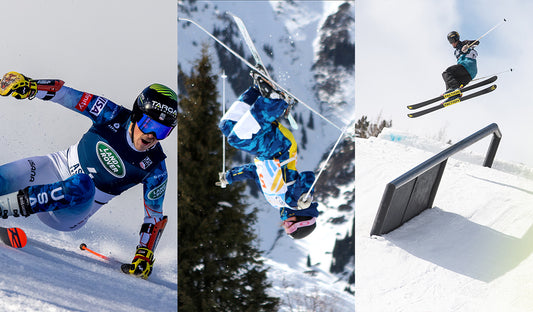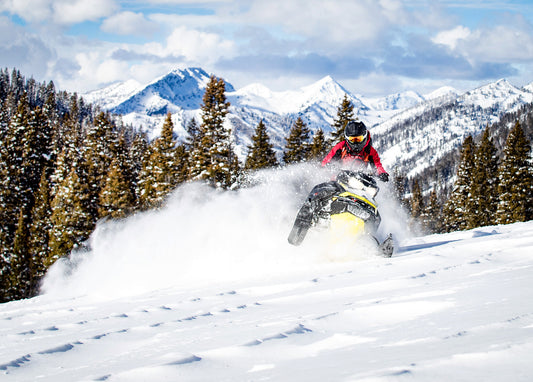Now is not the time to ski in the backcountry. With resorts shut down, there have been more people than ever skiing or riding in backcountry terrain. There are a few reasons why you need to be more careful now more than ever. We have to be respectful of the healthcare system and hospitals. This isn’t the time to get out and push yourself or be a hero. Additionally, with the increased traffic, there are a number of folks without the appropriate gear and knowledge skiing around you.
We get it, as avid skiers ourselves whose lives and jobs revolve around snow we are itching to get out and ski. With that said, if you are going out into the backcountry try and keep it local if you can and make sure to be thoughtful and prepared. We touched base with some of our world-renowned athletes over the weekend to get their insights on the backcountry and a few key points to always remember as you venture into potential avalanche terrain.

Preparation:
Amie Engerbretson:
“Your day in the backcountry starts way before you hit the snow. It is important to prep your mind, body and gear! For gear, make sure everything is charged and has sufficient battery. Your beacon, your radios, anything with a power source. Make sure your pack has appropriate rescue equipment, first aid and repair gear. I never go out without my sat phone, no matter how small the mission. Your mind is your most important tool you will take in the backcountry. For that, read the avalanche forecast for your area. Read it EVERYDAY! Reading it just the day you go out doesn’t always give you the full picture. If I am skiing in the backcountry at all, reading the avalanche forecast is as crucial to my day as coffee. This can help you make a good plan given the conditions. Lastly, take care of your body, and the best thing you can do? Get a good night sleep. Sleep is crucial for your body and your mind to function well, carry you through adventures and make good decisions.”

Group Dynamics:
Chris Davenport:
“Finding the right partners and communicating in a way that respects everyone’s skill levels are essential elements to success in the backcountry. I often hear from people that are keen to ski but have a hard time finding good partners, and a harder time finding mentors. This definitely takes time, in fact, many seasons of skiing in most cases, to build strong partner bonds and learn clear communications skills. Most of my partners I originally met on the ski resort or through the ski industry somehow, and we decided to venture out the gates or on small tours to start. These adventures led to bigger trips, and after 30+ years of backcountry skiing and ski mountaineering I actually count my number of key partners as less than 10. These are the ones I trust with my life, always. And with these partners our communication is almost second nature, we know what each other are thinking, and rarely make decisions that the other or others aren’t totally on-board with. It takes many years of relationship building in the backcountry to cultivate partners like this, but we all have to start at the beginning.
So get out there with as many folks as you can. Start with easy, low-risk tours and work on group dynamics, discussions of weather issues and avalanche problems, and build yourself a solid and familiar decision-making framework with these folks. Always debrief at the end of your tour and discuss what went right, and of course what you could have done better. Humility is a key component of this process. Over a period of seasons, the best partners will emerge and you will be able to up your game in the backcountry!"

On Snow Observations:
Owen Leeper:
“After I've done my prep for the day at home, such as checking the weather, reading the avy report and any recent trip reports, I will evaluate the conditions on slope. The first thing I look for is on the drive in, if the road you took to the zone has lots of new slides across, it would be a good time to tone down the line choice for the day. One of the best ways to check the snow is on the way up, you can get a feel for the snowpack while still in a safe spot. I always look for slide activity, especially on the same aspect you plan on skiing. On the skin track up, if you see cracks in the snow or hear whompfs from the snow settling it tells you that the new snow has not bonded very well. You should plan on skiing mellow terrain and avoiding crossing under avalanche prone slopes or with large terrain traps below that you could be swept in to. During the spring, my main concern is rapid warming and wet slides. As the snowpack warms, rollerballs will start forming and eventually create wet slides. They are obvious signs the snowpack is being weakened from the sun and you should consider turning around or choose a different aspect to ski. Before dropping into my line, I always look for safe zones where I will aim for, should a slide start. I try to ski-cut the top or if possible, cut a cornice onto the slope before I commit to making turns. It's great to have a plan for the day, but it's more important to change them if things don't line up to ski it safely.”



